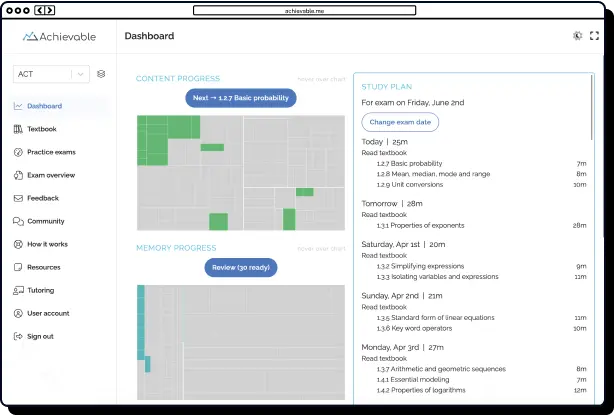
What are the different types of insurance?




Table of contents
The insurance industry can be difficult to navigate, especially with so many types of insurance coverage and licensing exams to consider. Individuals seeking protection often struggle to determine which insurance they need, whether it’s health insurance, casualty insurance, or personal lines insurance. Those looking to work in the field may be overwhelmed by the numerous insurance lines to choose from.
In this article, we’ll clarify the most common types of insurance coverage, discuss essential topics for passing insurance exams, and help you understand the various types of insurance claims that professionals and consumers encounter.

Life insurance
Designed to provide financial protection for your loved ones after your passing, life insurance ensures your family’s security in difficult times. There are two primary types of life insurance policies: term life insurance and whole life insurance.
Term life insurance provides coverage for a specific time period, typically 10 years. If you pass away during this policy term, your insurance coverage will activate, and your beneficiaries will receive the death benefit. On the other hand, whole life insurance provides lifelong coverage. Your insurance remains in effect as long as required premiums are paid, guaranteeing a payout to your designated beneficiaries upon your passing. Grasping these distinctions is critical if you are preparing for the life insurance exam or working toward licensure through a life and health insurance exam.
For both term and whole life insurance policies, you pay regular premiums to an insurance company. When the policyholder passes away, the insurer pays the designated beneficiaries the amount of the agreed-upon benefit.
Health insurance
Health insurance plays a vital role in managing routine and emergency health care costs, which can escalate quickly. By obtaining coverage through an employer or independently, you gain financial protection against the high expenses associated with medical treatment. The typical health insurance model requires you to pay a monthly premium to your insurer. Whenever you or a covered dependent needs medical care, the insurance company helps pay for the services, minimizing your out-of-pocket spending.
Most plans include a deductible, which is the amount you must pay yourself before your policy begins to cover eligible medical costs. Opting for a lower deductible often results in higher monthly premiums. Many health insurance policies require a copayment (also known as a copay), which is a set fee you pay for covered services, that may apply alongside or in place of a deductible. As with deductibles, you can usually secure a lower copay by agreeing to higher premiums. By becoming familiar with these terms, you can select the policy that best suits your needs and budget. This information is also vital for successfully passing your state’s health insurance exam.
Property insurance
Property insurance protects households and businesses against unexpected events, such as natural disasters or theft. When you pay a monthly premium to an insurance company, your property insurance provides financial protection if your home is damaged or destroyed due to covered incidents. It’s important for homeowners (or anyone preparing for the property insurance exam) to understand that some policies may exclude specific disasters, like floods or earthquakes. Therefore, always read your property insurance policy carefully and consider purchasing additional coverage if you want protection from these excluded natural disasters.
Along with safeguarding your home’s structure and belongings, many standard homeowner’s insurance policies also provide liability coverage. This often includes legal fees and costs related to lawsuits filed against you, even for incidents not directly related to your home. Remember, every property insurance policy has various exclusions and limitations, so reviewing the terms will make you aware of what types of loss are covered. This knowledge is essential for success on the property insurance exam and for making informed decisions about your real-world coverage.
Auto insurance
If you drive a car, you are required to carry proof of financial responsibility for your vehicle. For most people, this proof comes in the form of auto or car insurance, which is one of the most common types of insurance policies under personal lines and property and casualty insurance. Car insurance safeguards your vehicle if you’re involved in an accident or experience other forms of damage. It also provides crucial support for different types of insurance claims related to vehicular liability. Your car insurance can cover legal fees associated with using a vehicle, such as litigating auto accident claims and paying out judgments if you are found liable or at fault for damages.
There are three main categories of car insurance: bodily injury liability, property damage liability, and collision coverage. Bodily injury liability covers costs connected to injuries suffered by other people if you cause an accident. Property damage liability pays for damage caused to another person’s car while driving. Both bodily injury and property damage liability coverage are generally required by state laws.
Collision coverage, while typically optional, adds valuable financial protection by covering damage to your own vehicle if you’re in an accident. Each type of coverage features a policy limit: once your insurer has met the maximum payout listed in your policy, the remaining financial responsibility becomes yours.
For example, if a court issues a $500,000 judgment against you for bodily injury after an accident, but your policy’s bodily injury limit is only $350,000, you become personally responsible for the remaining $150,000. Understanding insurance limits is important to your financial security and for success on the casualty or personal lines insurance exam.

Conclusion
While there are many specialized types of insurance available, including aviation insurance, commercial insurance, and other specialty coverages, the four primary types of insurance exams discussed in this article remain the most common entry points into the industry. This guide aims to help you better understand key distinctions among insurance policies, various types of insurance claims, and how each coverage can suit your unique needs within the insurance industry.
If you’re interested in pursuing a career in insurance, preparing for exams like the Life and Health Insurance Exam, or deciding which insurance type to focus on, this overview can help you decide which area aligns with your goals. For those considering a professional path, our resources can help you learn more about starting your career in insurance and selecting the ideal insurance specialization.

